Shark Spartan GT Pro Carbon helmet review
Published on: 09 August 2023
Even though you may well be able to buy helmets accredited to the old 22-05 safety standard for quite a few years yet, from the middle of this year the helmet manufacturers will no longer be able to produce helmets to that standard.
So over the next six to 12 months you will be seeing a lot of helmets being relaunched to the new, more rigorous ECE 22-06 standard. The new standard makes many more and much higher demands of a helmet in terms of its ability to receive an impact and protect the rider.
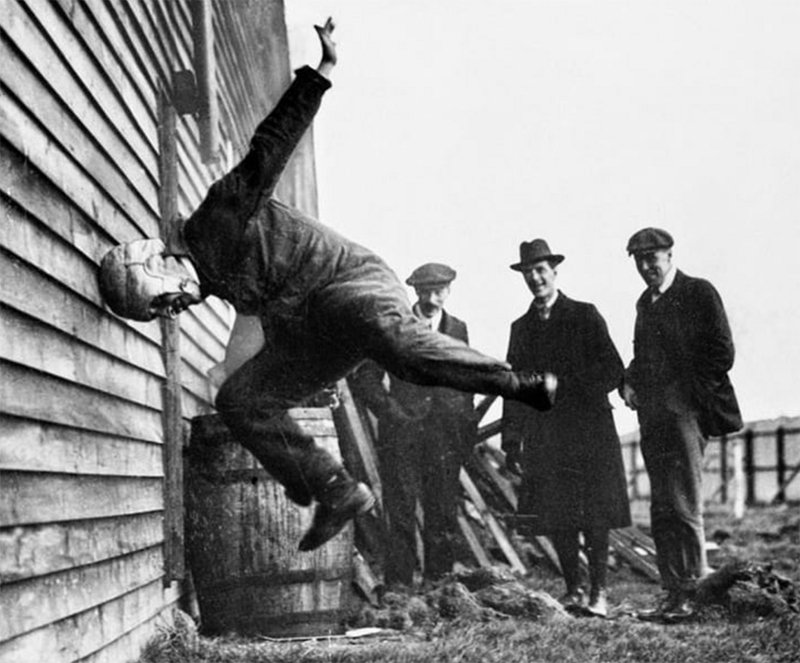
Helmets that cannot meet the new standard will disappear from the shelves. Some will pass the new standard with almost no changes. The majority, we suspect, will re-appear albeit with largely imperceptible changes to the eps or the shell.
The Shark Spartan GT Pro is an example of the latter. It is basically the old Spartan GT, but with the shell of the company’s GT Carbon model. Now carbon helmets are not more protective than composite ones, but carbon is stronger, and so one can suggest with a degree of confidence that the old shell simply did not perform well enough on the new tests for shell rigidity.
Out of interest, pretty much the only way to identify the new helmet from the old one is the red anodised bolt that secures the visor mechanism to the shell.
In terms of weight, the new helmet is very marginally lighter than the old one, although what confuses matters is that, under 22-06, helmets now have to be weighed with all the accessories fitted, which was not the case under 22-05. But put it like this, the difference in weight is no more than a small bag of jelly tots!
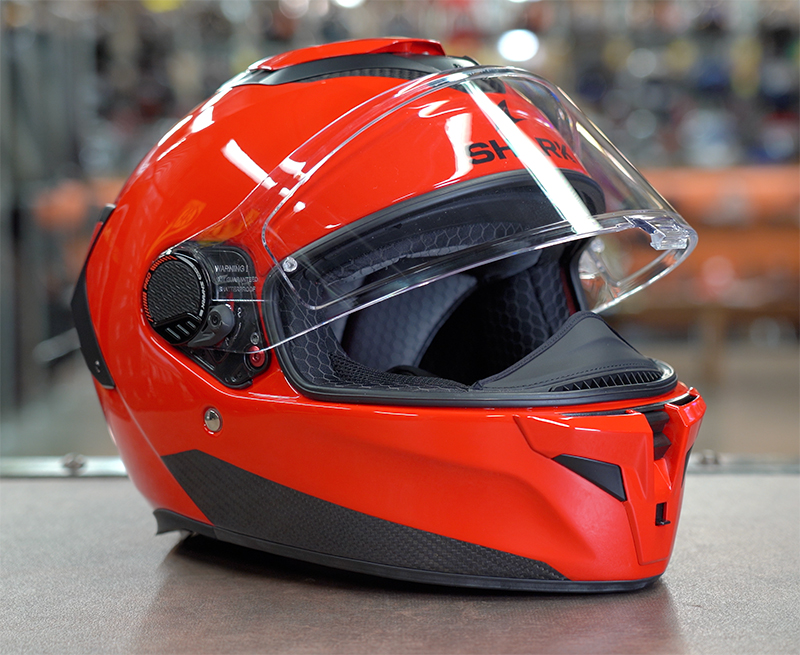
The Spartan GT Pro, like its predecessor the GT, is a sports-touring helmet, and represents Shark’s attempt to take on the venerable Shoei GT Air. And of course we understand why Shark would want to do this. The Shoei GT Air 3 sets the standard in this category.
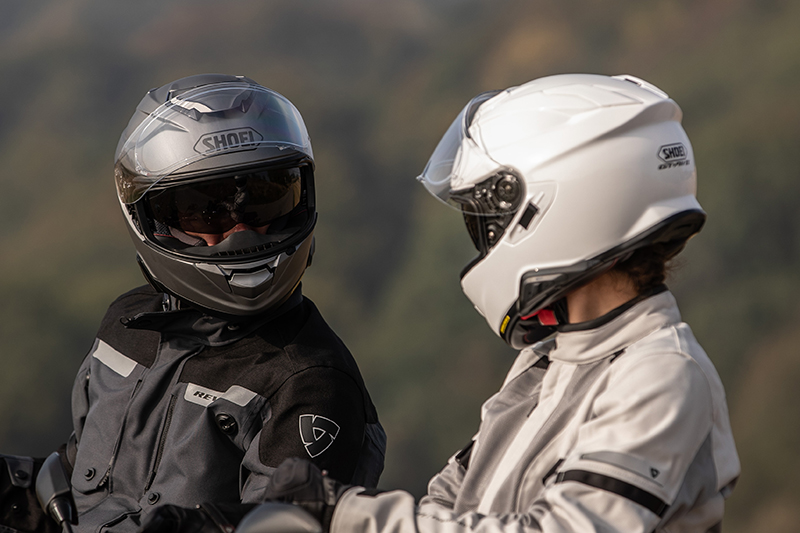
In terms of features and amenities, the Shark has, and does, almost everything the Shoei helmet has, and does. So you get multi-port venting, a Grade 1 outer visor, a chin curtain, a breath guard, a Pinlock 120 anti-fog insert, and so on.
In some areas, we would suggest that the Shark helmet actually betters the Shoei. The detente mechanism on both the outer visor and the sun visor is simply the best we have come across. It is almost infinitely adjustable, and the visor will stay where you want it. There’s absolutely no need for a ‘crack’ position with the Shark. You crack the visor wherever you want to crack it. We also like the mechanism for removing the visor. The system on the Shoei is not bad, but the one on the Shark is simpler and faster. We also like Shark’s attempt to make the helmet quieter, to which end they have created a tighter, elasticated neck roll. This can make getting in and out of the helmet a little more difficult, but it’s clear what Shark had in mind with this feature.
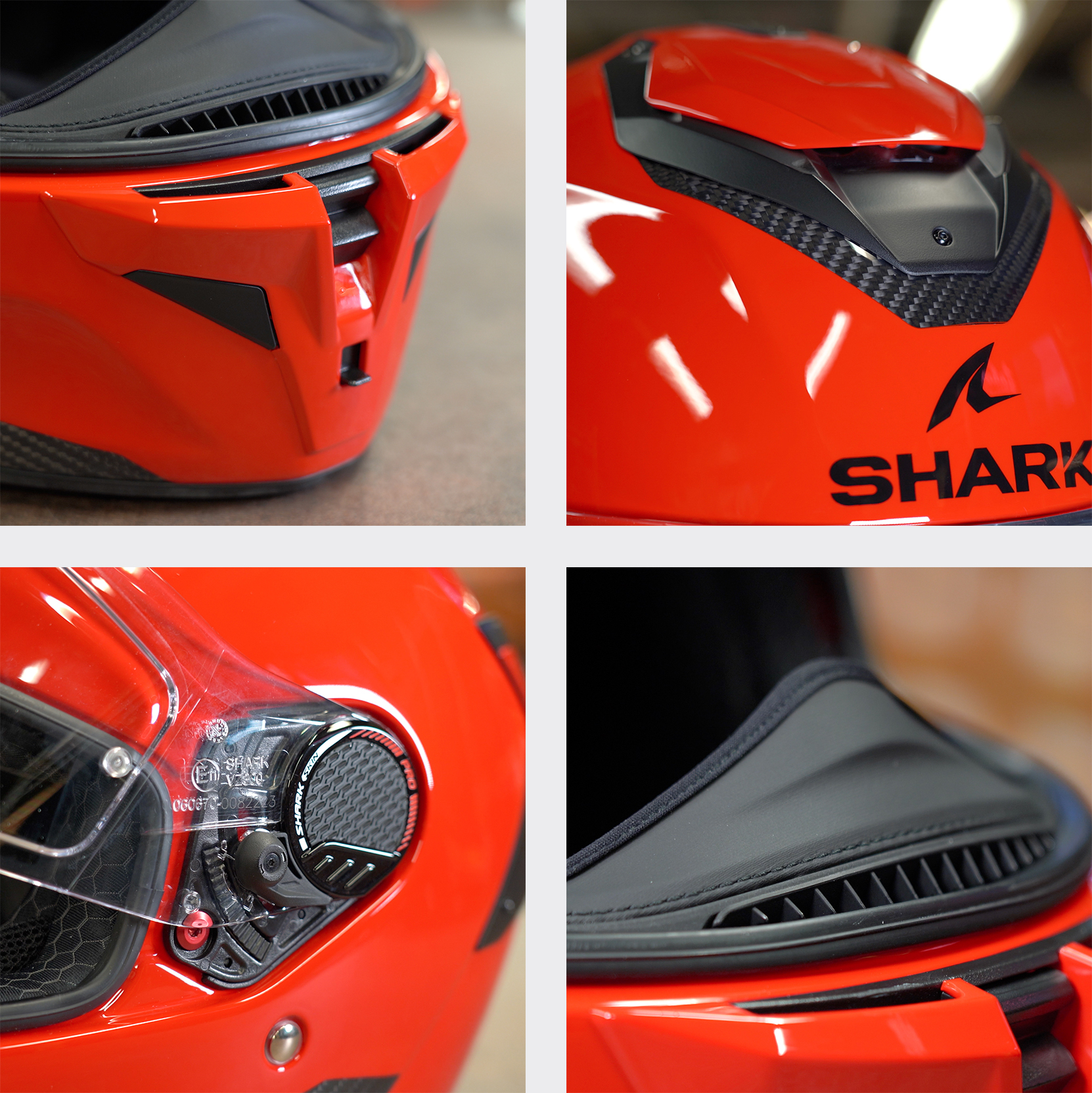
There was never anything wrong with the old Spartan GT, although we were, and still are, fans of the Shark Spartan RS helmet because, at just £300, it offers such great value for money to those who might swallow hard at the near £500 of the GT Air.
But in the margin, it has to be acknowledged that the Shark is not a GT Air. Something might look like a duck, swim like a duck and quack like a duck, but that doesn’t always mean that it is a duck. The Shoei feels more solid, and better put together. The Shark comes in a sub-optimal two shell sizes, whereas the Shoei comes in four. And whilst we can change the cheekpads in the Shark in an attempt to provide a partial custom fit, we can do nothing with the headliner, so we have a far better chance of getting a better fit with the Shoei.
The Shoei also comes with a state-of-the-art integrated comms. facility. You can fit a comms. unit to the Shark, but it doesn’t fit seamlessly into the helmet in the way that it does in the Shoei. The Shark system is also powered by Midlands, which means that you probably won’t be able to talk to anybody else, because nobody uses Midland.
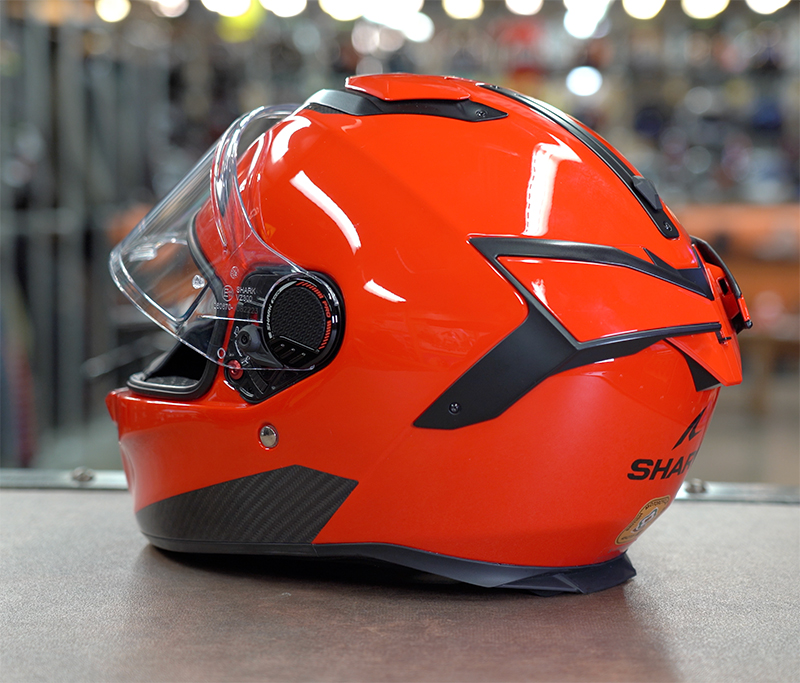
When it comes to classifying helmet brands, it’s not altogether clear whether Shark sits at the bottom end of the premium sector, or the top end of the mid-market sector. The company produces some very ordinary Polycarbonate budget helmets, but also some high-end race helmets that are worn by MotoGP riders. And so Shark is definitely a player; a maker of proper helmets.
But, as we have implied, the GT Pro is not a GT Air, yet it is priced very close to a GT Air. At the time of going to press, a white Spartan GT Pro is priced at £429. The GT Air is priced at £479. That’s a difference of just £50; and at this end of the market, that is not going to be a deciding factor. Nobody is going to choose the Shark solely in order to save a couple of ponies or half a Ton. And so, on this basis, we think the Shoei probably looks more compelling proposition. But there are some considerations.
The Shark is 22-06. The Shoei is not. Clearly, a new GT Air is on its way, although even if we did know when it was coming we would probably be bound by a Confidentiality Agreement, meaning that we could say nothing! But we can assume that a new GT Air is coming, and that when it does arrive it will be 22-06 compliant. Now, given that companies like Arai and Shoei always test to a standard that exceeds the statutory minimum, nobody would ever suggest that they are not properly protected in a GT Air. But if you are someone who needs to tick boxes, the only truth is that, right now, the Shark is 22-06; the shoei isn’t!

The other reason why somebody might go for the Shark in preference to the Shoei is fit. The internal shap of the Shoei is quite oval. The Shark has a much rounder fit. Unfortunately, if the Shoei is tight on the side of the head, going for a larger size will often not be the solution, for the end result will be a helmet that is too long front to back. And so, for some people looking for a premium-quality, sport-touring helmet, the Shark will definitely be the one to go for.
Ultimately, of course, a helmet is such a personal item that the only thing you can do is try them both on. You can do that anywhere, but of course if you visit Motolegends here in Guildford we can custom fit them both so as to put you in a better position to make a properly informed decision!
For more information and to order online, follow the link to the Shark Spartan GT helmet.































































